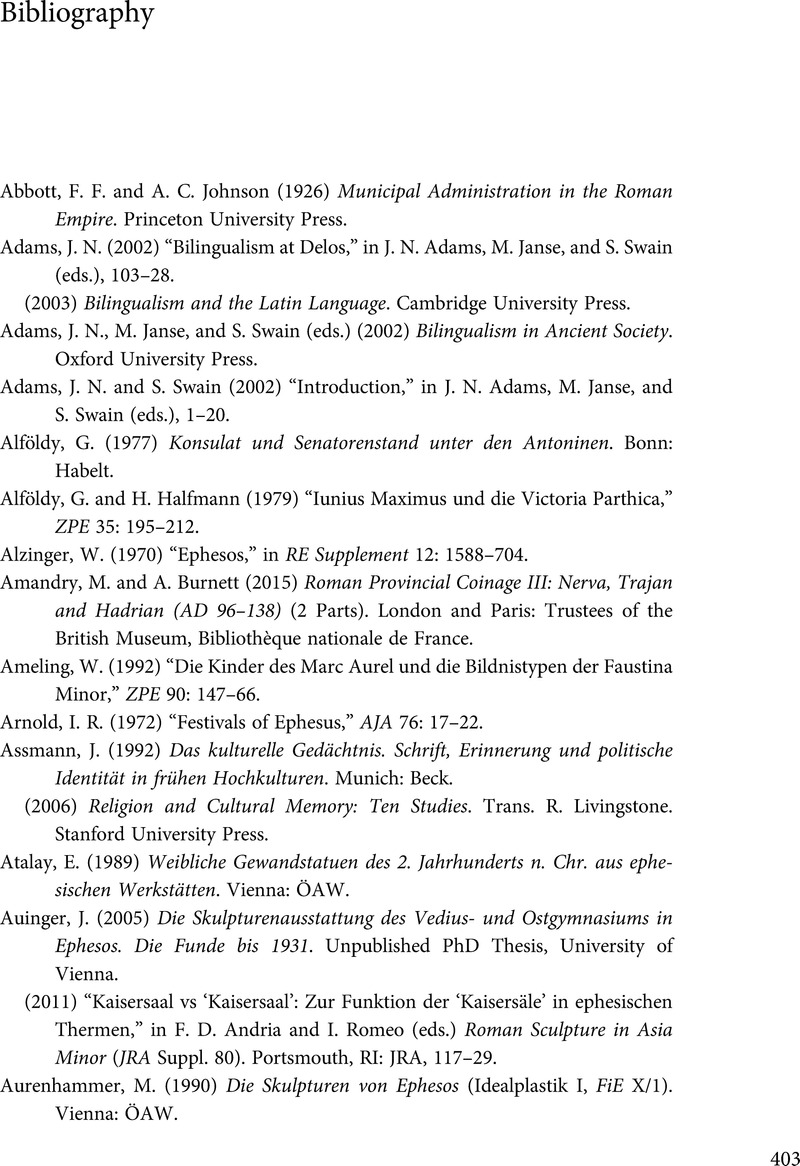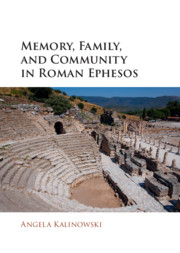Book contents
- Memory, Family, and Community in Roman Ephesos
- Memory, Family, and Community in Roman Ephesos
- Copyright page
- Dedication
- Contents
- Figures
- Maps
- Tables
- Acknowledgments
- Abbreviations
- Introduction: Memory, Family, and Community in Roman Ephesos
- 1 Community, Identity, and Memory in Roman Ephesos
- 2 The Vedii: A Family’s History in Ephesos
- 3 “Great is Artemis of the Ephesians!” The Vedii and the Goddess of Ephesos
- 4 Fun and Games in Roman Ephesos: The Vedii, the Agonistic Festivals, and the Imperial Cult
- 5 The Vedii and the Associations of Ephesos
- 6 The Vedii and Their Civic Buildings in Ephesos
- Conclusions The Vedii: A Family’s Place in the Community and in the Commemorative Landscape of Ephesos
- Appendix Who’s Who among the Ephesian Vedii and Flavii Vedii
- Bibliography
- Subject Index
- Index of Inscriptions
- References
Bibliography
Published online by Cambridge University Press: 06 July 2021
- Memory, Family, and Community in Roman Ephesos
- Memory, Family, and Community in Roman Ephesos
- Copyright page
- Dedication
- Contents
- Figures
- Maps
- Tables
- Acknowledgments
- Abbreviations
- Introduction: Memory, Family, and Community in Roman Ephesos
- 1 Community, Identity, and Memory in Roman Ephesos
- 2 The Vedii: A Family’s History in Ephesos
- 3 “Great is Artemis of the Ephesians!” The Vedii and the Goddess of Ephesos
- 4 Fun and Games in Roman Ephesos: The Vedii, the Agonistic Festivals, and the Imperial Cult
- 5 The Vedii and the Associations of Ephesos
- 6 The Vedii and Their Civic Buildings in Ephesos
- Conclusions The Vedii: A Family’s Place in the Community and in the Commemorative Landscape of Ephesos
- Appendix Who’s Who among the Ephesian Vedii and Flavii Vedii
- Bibliography
- Subject Index
- Index of Inscriptions
- References
Summary

- Type
- Chapter
- Information
- Memory, Family, and Community in Roman Ephesos , pp. 403 - 426Publisher: Cambridge University PressPrint publication year: 2021

